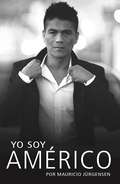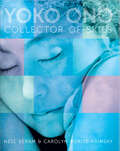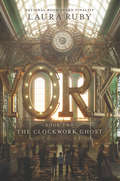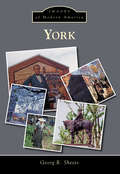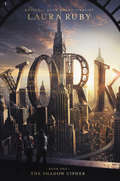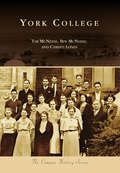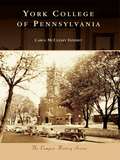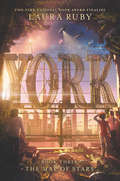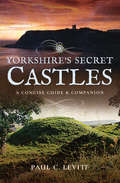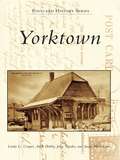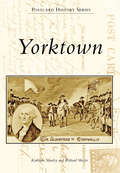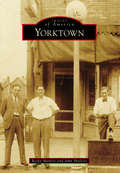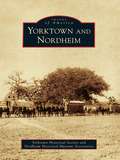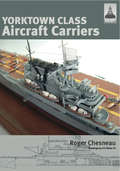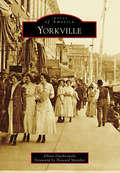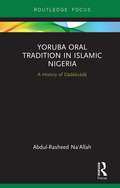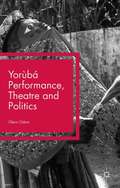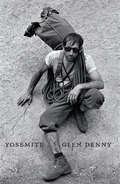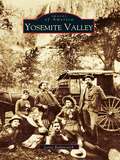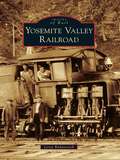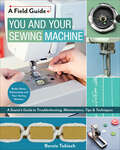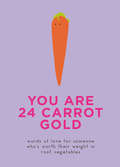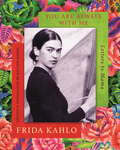- Table View
- List View
Yo soy Américo
by Mauricio Jürgensen Domingo VegaLa biografía del cantante más popular de la música chilena actual, narrada por Mauricio Jürgensen Luego del éxito de su libro Dulce patria. Historias de la música chilena, el periodista Mauricio Jürgensen se aventura con la biografía de Domingo Johny Vega, Américo, el cantante más popular de la música chilena de los últimos años. Su infancia en Arica, la relación con su padre, sus inicios en el mundo de la música con la banda Alegría, el éxito que ha cosechado en estos años y las sombras que lo han atormentado son relatados por Jürgensen a partir de años de seguimiento y entrevistas exclusivas, en las que el artista aborda todos los temas.
Yoko Ono: Collector of Skies
by Nell Beram Carolyn Boriss-KrimskyThis lyrical biography explores the life and art of Yoko Ono, from her childhood haiku to her avant-garde visual art and experimental music. An outcast throughout most of her life, and misunderstood by every group she was supposed to belong to, Yoko always followed her own unique vision to create art that was ahead of its time and would later be celebrated. Her focus remained on being an artist, even when the rest of world saw her only as the wife of John Lennon. Yoko Ono’s moving story will inspire any young adult who has ever felt like an outsider, or who is developing or questioning ideas about being an artist, to follow their dreams and find beauty in all that surrounds them.
York: The Clockwork Ghost (York #2)
by Laura RubyNational Book Award finalist Laura Ruby returns with the middle chapter in her epic alternate-history adventure—a journey that will test Tess, Theo, and Jaime and change their lives forever. It was only a few weeks ago that the Biedermann twins, Tess and Theo, along with their friend Jaime Cruz, followed the secrets of the Morningstarrs’ cipher further than anyone had in its century-and a-half history—and destroyed their beloved home in the process.But the Old York Cipher still isn’t solved. The demolition of 354 W. 73rd Street only revealed the next clue in the greatest mystery of the modern world, and if Tess, Theo, and Jaime want to discover what lies at the end of the puzzle laid into the buildings of New York by its brilliant, enigmatic architects, they will need to press on.But doing so could prove even more dangerous than they know. It is clear that the Morningstarr twins marshaled all the strange technology they had spent their lives creating in the construction of the Cipher, and that technology has its own plans for those who pursue it.It's also clear that Tess, Theo, and Jaime are not the only ones on the trail of the treasure. As enemies both known and unknown close in on them from all sides and the very foundations of the city seem to crumble around them, they will have to ask themselves how far they will go to change the unchangeable—and whether the price of knowing the secrets of the Morningstarrs is one they are willing to pay.
York: To The Setting Of The Sun (Images of Modern America)
by Georg R. SheetsYork experienced great changes following World War II. People began moving from the city to the suburbs, and many department stores, like Bear's, Wiest's, Jack's, and Gregory's, closed. Long-standing companies such as AMF and York Air Conditioning were sold or moved, while banks, industries, and businesses merged. The York County Shopping Center opened on the East End, attracting customers who had formerly shopped downtown. WSBA TV went on the air in 1952, starting a new era in communication and a business empire that still has a strong presence today. The band Live grew from a group of local high school students to well-known musicians that graced the cover of Rolling Stone. Jeff Koons became one of the most celebrated artists in the world, Kim Bracey became the first African American mayor, and York businessman Tom Wolf became governor. York continues to celebrate its rich heritage as the "Factory Capital of the World."
York: The Shadow Cipher (York #1)
by Dave Stevenson Laura Ruby<P><P>From National Book Award finalist and Printz Award winner Laura Ruby comes an epic alternate history series about three kids who try to solve the greatest mystery of the modern world: a puzzle and treasure hunt laid into the very streets and buildings of New York City. <P><P> It was 1798 when the Morningstarr twins arrived in New York with a vision for a magnificent city: towering skyscrapers, dazzling machines, and winding train lines, all running on technology no one had ever seen before. <P><P> Fifty-seven years later, the enigmatic architects disappeared, leaving behind for the people of New York the Old York Cipher—a puzzle laid into the shining city they constructed, at the end of which was promised a treasure beyond all imagining. <P><P>By the present day, however, the puzzle has never been solved, and the greatest mystery of the modern world is little more than a tourist attraction. <P><P>Tess and Theo Biedermann and their friend Jaime Cruz live in a Morningstarr apartment—until a real estate developer announces that the city has agreed to sell him the five remaining Morningstarr buildings. Their likely destruction means the end of a dream long held by the people of New York. And if Tess, Theo, and Jaime want to save their home, they have to prove that the Old York Cipher is real. Which means they have to solve it.
York College (Campus History)
by Tim Mcneese Bev Mcneese Christi LonesThe dream of York College involved hundreds of people--its reality has touched the lives of thousands. Born in a small town on the rolling plains of Nebraska in 1890, the United Brethren Church and citizens of York established York College on an empty expanse of prairie called East Hill. Its earliest classes, offered in rented rooms above a dry goods store on the town square, established the foundations of a Christian college. The institution grew as buildings arrived with each passing decade. These brick-and-mortar symbols of the college's progress include Old Main, Hulitt Conservatory of Music, Alumni Library, and Middlebrook Hall. When a tragic fire engulfed the school's venerable Old Main in 1951, York College was pulled from the ashes as a second group of believers took the institution's reins. The Churches of Christ determined to continue the dream, standing on the shoulders of those who had come before them.
York College of Pennsylvania
by Carol Mccleary InnerstThe history of York College of Pennsylvania begins shortly after the Revolutionary War. The college traces its lineage directly to three ancestral schools. The foundation was York County Academy, an English classical school chartered in 1787. The academy merged in 1929 with York Collegiate Institute, founded in 1873. Under one roof, both schools survived the Great Depression. In 1941, the charter was amended to allow two years of college-level courses and the institution became York Junior College. With an influx of war veterans, York Junior College quickly outgrew its downtown building and in 1956 acquired land for a new campus. By 1968, it was a four-year baccalaureate-granting college with a new name. Through vintage photographs, York College of Pennsylvania celebrates the journey of the school from its humble beginnings to national recognition.
York: The Map of Stars (York #3)
by Laura RubyThe thrilling conclusion to two-time National Book Award finalist Laura Ruby’s epic adventure through the streets of an alternate New York City. It was only a few days ago that Tess Biedermann, Theo Biedermann, and Jaime Cruz, along with a mysterious figure from the past, managed to survive an assault on the location of the latest clue in the Morningstarr cipher—and, in the process, made a shocking discovery about their own connection to this one-hundred-sixty-year-old enigma. Now the friends are divided. Tess and Theo have no idea what the photo they found in Greenwood Cemetery means, but Jaime is convinced that they do, and that they’ve been keeping their own secrets from him. As the city continues to break around them, suddenly solving the greatest mystery of the modern world seems less important than saving their own friendship. The stakes of completing the cipher, however, have never been higher. Darnell Slant, real estate developer and owner of all the Morningstarr buildings, knows that they hold one last secret: a power that even the Morningstarrs themselves never revealed. The world has rested on a precarious balance of power for generations; now Slant and his shadowy business partners aim to unbalance it. It’s up to Tess, Theo, and Jaime to uncover the Morningstarrs’ final mystery in a desperate attempt to set things right. The world—theirs, and possibly others—depends on it.
Yorkshire's Secret Castles: A Concise Guide & Companion
by Paul C. LevittThe Yorkshire countryside&’s ancient earthwork castles, built in the time of the Norman Conquest, come to life in this beautiful guide—includes pictures! The Norman conquest of the British isle was a landmark event in England&’s history, drawing a line between its misty Roman and Saxon origins and the grand empire it would eventually become. Largely built after 1071, the era&’s castles were basic earth-and-timber structures situated on high mounds known as mottes. Though these ancient structures have largely been forgotten, neglected, or in some cases even destroyed, many still exist today—and have fascinating stories to tell. Drawing on the Yorkshire Archeological & Historical Society archives, this comprehensive and knowledgeable guide explores the fascinating history of these enduringstructures. Providing a guide to seventy-five castles in total, the book offers detailed information and anecdotal trivia about each site.
Yorktown (Postcard History)
by Adele Hobby John Tegeder Susan Hack-Lane Linda G. CooperYorktown is one of the northernmost towns in Westchester County. This volume of vintage postcards draws from a time when the railroad was a predominant fixture in the community and travelers flocked to summer hotels and lakeside bungalow colonies. Often thought of as ephemera, something to be used and thrown away, postcard images have proven over time to be a valuable document of a time and place. For those who were visitors and those who received postcards, these striking images capture the past in terms of Yorktown's architecture, entertainment, commerce, and community.
Yorktown: A History Of Yorktown, Virginia And Its Victory Celebrations (Postcard History Series)
by Kathleen Manley Richard ShislerIn 1750, the deepwater port of Yorktown housed approximately 250–300 businesses, with as many as 2,000 people thriving in the small town. By 1781, the Revolutionary War’s final siege had been staged, and the British were caught without resources to win the final battle against the American and Allied forces. Freedom was won for America, but Yorktown would continue to see war. In 1862, the Peninsula Campaign of the Civil War led to a monthlong battle near the site of the previous conflict. In 1917, World War I brought the embarkation of the Atlantic Fleet, and within a few decades, World War II would change Yorktown and the nation forever. These historic postcards portray the first family houses, the churches, the courthouses, the military, the battlefields, and the commemorative memorials of the area, showing the town’s progression through time, from the 18th century through the present day.
Yorktown (Images of America)
by John Shideler Becky MonroeThe Delaware Indians were nomadic and often inhabited the Yorktown area. The early settlers in Yorktown found the tribe to be friendly and accepted their helpful offers of trading goods and giving guidance for planting crops. Since it contained two bodies of water, Yorktown was a natural choice for the location of a mill. Oliver H. Smith platted the original "Town of Yorktown" in 1837. The main business district was never more than two and a half blocks long, but throughout the years other businesses built along the main street outside of the original area. For many years, Yorktown was a farm-based community. Later, families depended on local industry as a means of support. Recently, the boundaries have grown to such an extent that Yorktown now includes the entire Mt. Pleasant Township.
Yorktown and Nordheim
by Nordheim Historical Museum Association Yorktown Historical SocietyFounded 7 miles apart in south central Texas, Yorktown and Nordheim were settled by German immigrants. These immigrants found the rolling hills and grassland full of oak trees suitable for settlement, and the rich soil helped to make farming a way of life. Yorktown was settled near the Coleto Creek as a rest stop along the Indianola Trail for teamsters delivering freight to New Braunfels. Nordheim was settled because it was a high point and beacon for settlers, and it continued to grow when the San Antonio and Aransas Pass Railroad was built. As the towns grew, so did the businesses and churches. The settlers shared a love of music, and bands came together to perform at various functions. On Saturdays the farmers, their families, and hired help would come to buy supplies, visit friends, and enjoy a day away from work. Today the spirit of community is still strong, as citizens put together annual celebrations and activities that promote tourism and help to maintain local pride.
Yorktown Class Aircraft Carriers (ShipCraft #3)
by Roger ChesneauThis fully illustrated guide offers historical context and step-by-step instruction for building and modifying US aircraft carrier models. This volume in the ShipCraft series covers the Yorktown class of American aircraft carriers. These legendary ships kept the Japanese at bay through World War II, in the dark days between Pearl Harbor and the Battle of Midway, where the USS Yorktown herself was lost. The USS Hornet launched the famous Doolittle Raid on Japan before being sunk at Santa Cruz in October 1942, but the USS Enterprise survived the fierce fighting of the early war years to become the US Navy's most decorated ship. This lavishly illustrated guide takes readers through a brief history of the development and careers of the Yorktown class. With its unparalleled level of visual information—including paint schemes, line drawings and photographs—it is simply the best reference for any modelmaker setting out to build one of these famous carriers.
Yorkville
by Jillian Duchnowski Howard MantheiYorkville's population has boomed in recent decades, but its most defining landmarks today would be familiar to its earliest settlers. Earl Adams built the area's first log cabin in 1833, near the prominent hill that is the site of Kendall County's historic courthouse, which early residents fought to rebuild after a devastating fire in 1887. Similarly, the Fox River and Blackberry Creek supported the community's early commerce, from the sawmill John Schneider built in the 1830s to the state's only man-made white-water course. Yorkville often fostered leaders who believed in making big contributions. Dennis Hastert, the longest-serving Republican speaker of the US House of Representatives, taught sociology, economics, and speech at Yorkville High School from 1965 to 1980. Glen D. Palmer oversaw the state's first game farm before serving as the state's conservation director from 1953 to 1961. Robert Mitchler, a Navy veteran who served as a state senator from 1964 to 1981, flew a large American flag day and night in his front yard off of Route 34.
Yoruba Art and Language
by Rowland AbiodunThe Yoruba was one of the most important civilizations of sub-Saharan Africa. While the high quality and range of its artistic and material production have long been recognized, the art of the Yoruba has been judged primarily according to the standards and principles of Western aesthetics. In this book, which merges the methods of art history, archaeology, and anthropology, Rowland Abiodun offers new insights into Yoruba art and material culture by examining them within the context of the civilization's cultural norms and values and, above all, the Yoruba language. Abiodun draws on his fluency and prodigious knowledge of Yoruba culture and language to dramatically enrich our understanding of Yoruba civilization and its arts. The book includes a companion website with audio clips of the Yoruba language, helping the reader better grasp the integral connection between art and language in Yoruba culture.
Yoruba Oral Tradition in Islamic Nigeria: A History of Dàdàkúàdá (Global Africa)
by Abdul-Rasheed Na'AllahThis book traces Dàdàkúàdá’s history and artistic vision and discusses its vibrancy as the most popular traditional Yoruba oral art form in Islamic Africa. Foregrounding the role of Dàdàkúàdá in Ilorin, and of Ilorin in Dàdàkúàdá the book covers the history, cultural identity, performance techniques, language, social life and relationship with Islam of the oral genre. The author examines Dàdàkúàdá’s relationship with Islam and discusses how the Dàdàkúàdá singers, through their songs and performances, are able to accommodate Islam in ways that have ensured their continued survival as a traditional African genre in a predominantly Muslim community. This book will be of interest to scholars of traditional African culture, African art history, performance studies and Islam in Africa.
Yorùbá Performance, Theatre and Politics
by Glenn OdomThis book explains the connections between traditional performance (e.g. masked dances, prophecy, praise recitations), contemporary theatre (Wole Soyinka, Ola Rotimi, Tess Onwueme, Femi Osofisan, and Stella Oyedepo) , and the political sphere in the context of the Yorùbá people in Nigeria.
YOSEMITE IN THE SIXTIES
by Steve Roper Glenn Denny Yvon ChouinardThe sheer granite walls of Yosemite Valley galvanized a dedicated group of rock climbers in the 1960s, who saw the nearly holdless, glacier-polished faces as the purest form of challenge. The awesome Half Dome and El Capitan were first climbed in the late 1950s, ushering in a new era of rock climbing later known as the golden age of Yosemite climbing. During this era, the climbers of the sixties developed the techniques, tools, and philosophies that made Yosemite the most influential rock climbing arena in the world. In the spirit of the social changes of the sixties, a small group of committed climbers dropped out of mainstream work and society and took up residence in Camp 4, perfecting their skills and developing a unique social scene. This austere, boulder-strewn campground became the epicenter of the climbing world. It served both as a launching pad for spectacular feats and adventures and a refuge from them. Here plans were made, teams were formed, and the rest of life was lived. The significance of Camp 4 was recently recognized with its placement on the National Register of Historic Places.
Yosemite Valley
by Leroy RadanovichA natural wonder hewn by glaciers from the granite slopes of the western Sierra Nevada, Yosemite Valley reveals the power and beauty of nature's hand. Here, in the sublime "Incomparable Valley" of naturalist John Muir, alpine forests frame the legendary sites of Half Dome, El Capitan, Bridalveil Falls, Yosemite Falls, and other massive stone clefts. These marvels of rock and water have inspired writers, artists, and photographers ever since the American discovery of the valley by gold miners of the Mariposa Battalion acting as militia in l850. Within four years, Americans who realized the commercial value of Yosemite Valley began developing lodging facilities and promoting it as a tourist destination. Concerned Californians encouraged President Lincoln to grant the valley and the Mariposa Grove of Big Trees to the State of California for the formation of a state park. This led to the creation of Yosemite National Park in l890.
Yosemite Valley Railroad
by Leroy RadanovichThe Yosemite Valley Railroad was constructed as a badly needed conveyance to Yosemite Valley in the days before the automobile. Visitation to Yosemite had been small, and the federal government wished to introduce the new park system to the public. A railroad through the Merced River Canyon from Merced was the answer to the challenging terrain. Thousands of acres of virgin timber forest and other natural resources along the way supported the building and operation of this rail line. From l906 until World War II, timber, gold, barium, limestone, freight, and visitors rode the rails to Yosemite National Park on this line.
You and Your Sewing Machine: A Sewist's Guide to Troubleshooting, Maintenance, Tips & Techniques
by Bernie TobischA sewing machine pro shares expert tips on choosing, using, maintaining, and troubleshooting—packed with photos! From the sewing machine whisperer comes this in-depth, visual guide to how a sewing machine works, how to keep it in good working order, and how to solve common problems. With this book from Bernie Tobisch—who has decades of experience as a technician, dealer, and teacher—you can learn what questions to ask when buying a new sewing machine, what sewing machine foot to use for different projects, what regular maintenance you need to perform, and more. Perfect for sewists and quilters of all levels, this friendly approach to learning about and troubleshooting YOUR sewing machine gives you the tools you need to sew and quilt with less frustration and better results.
You Are 24 Carrot Gold: Words of Love for Someone Who's Worth Their Weight in Root Vegetables
by XxxxxxThere’s always that one pearson who’s the cherry on top, the cool beans, the pea’s knees. Tell them they’re amaizeing with this little book of upbeat and adorkable fruit puns.This cute and colorful series of fruit-pun-filled gift books are the perfect pick-me-ups for you, your friend or your partner in crime. Do you need to avocuddle, or are you grapeful for someone who’s 24 carrot gold?? Then share the clove with these little books: AvoCuddle, and You are 24 Carrot Gold.*veg, nuts and seeds are fair game
You are Always With Me: Letters to Mama
by Frida KahloFrida Kahlo is regarded as one of Mexico's greatest painters: her extraordinary personal style, her tragic story, her relationship with Diego Rivera (the more famous painter in their day) alongside her passionate paintings have made her a cult figure since she died over sixty years ago.But beyond the familiar images there is a private story about a daughter who confided in her beloved mama, Matilde Calderon Kahlo. Until now Frida's handwritten letters have only been available to scholars - and recently in Spanish in a book that appeared in 2016. Now for the first time we have over fifty of these letters in English.And what a treasure. Funny, observant and honest, they chart Kahlo's relationship with her mother; a relationship that was sometimes fraught - as with most mother and daughters - but was always alive and honest. They begin in 1923 when Kahlo was sixteen and continue until the death of her mother in 1932. These letters tell us about Kahlo's anxieties, her feelings about her husband and friends and above all reveal the marvellous, critical painter's eye in her description of people and places from Mexico, San Francisco and New York. Edited, translated and introduced by Dr. Héctor Jaimes, Professor of Spanish, North Carolina State University (who edited the Spanish version) this book is published with paintings and photographs.
You are Always With Me: Letters to Mama
by Frida KahloFrida Kahlo is regarded as one of Mexico's greatest painters: her extraordinary personal style, her tragic story, her relationship with Diego Rivera (the more famous painter in their day) alongside her passionate paintings have made her a cult figure since she died over sixty years ago.But beyond the familiar images there is a private story about a daughter who confided in her beloved mama, Matilde Calderon Kahlo. Until now Frida's handwritten letters have only been available to scholars - and recently in Spanish in a book that appeared in 2016. Now for the first time we have over fifty of these letters in English.And what a treasure. Funny, observant and honest, they chart Kahlo's relationship with her mother; a relationship that was sometimes fraught - as with most mother and daughters - but was always alive and honest. They begin in 1923 when Kahlo was sixteen and continue until the death of her mother in 1932. These letters tell us about Kahlo's anxieties, her feelings about her husband and friends and above all reveal the marvellous, critical painter's eye in her description of people and places from Mexico, San Francisco and New York. Edited, translated and introduced by Dr. Héctor Jaimes, Professor of Spanish, North Carolina State University (who edited the Spanish version) this book is published with paintings and photographs.
